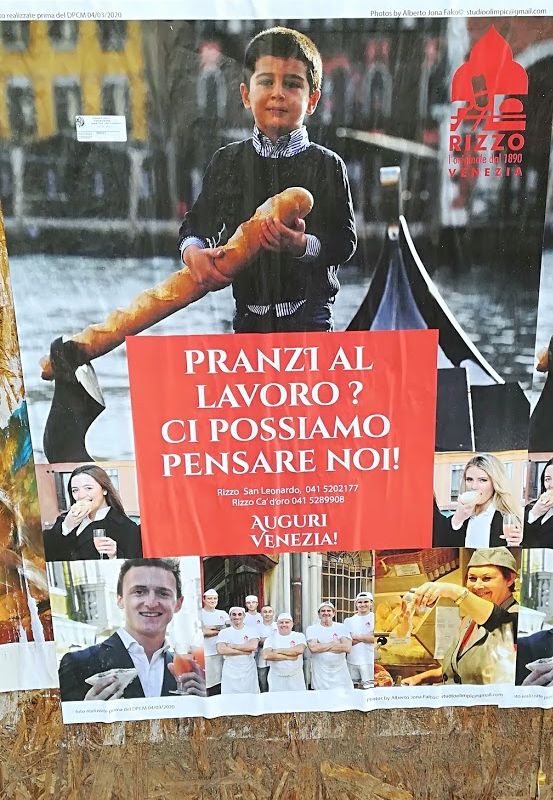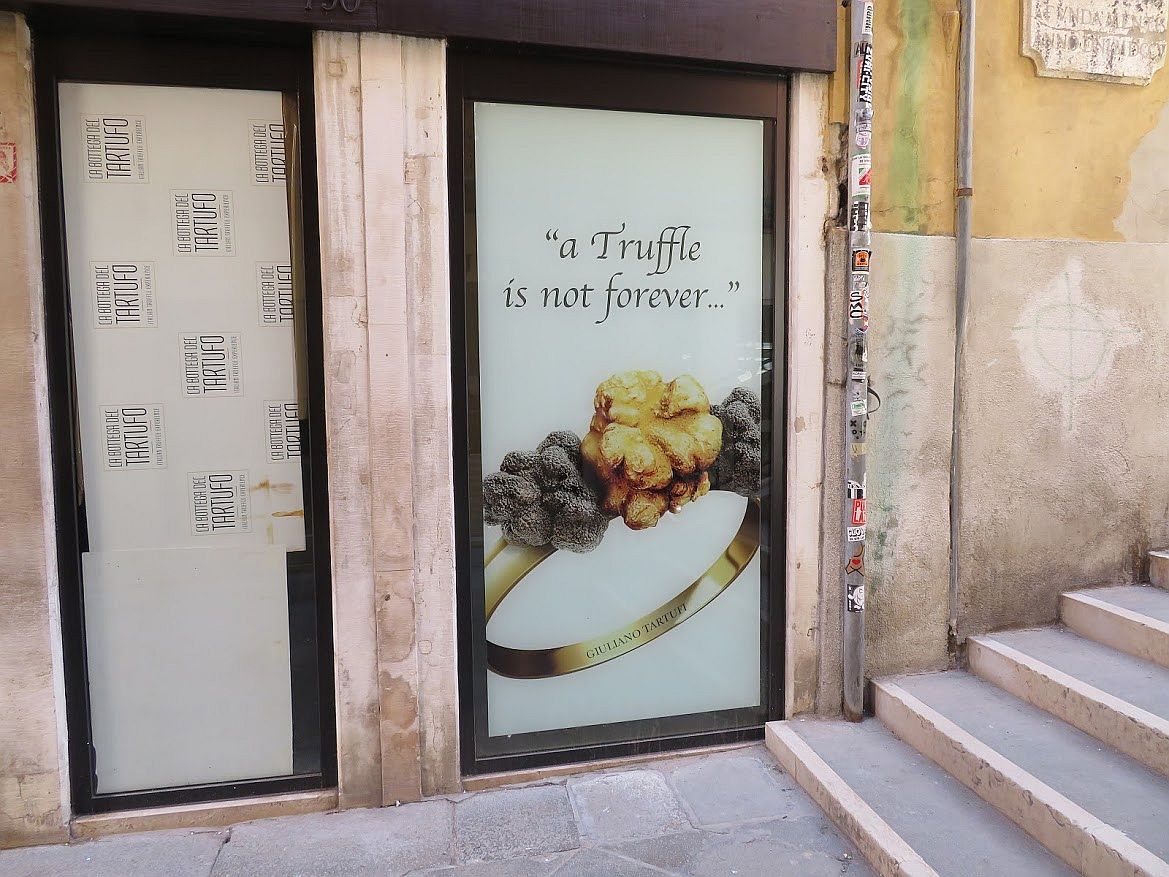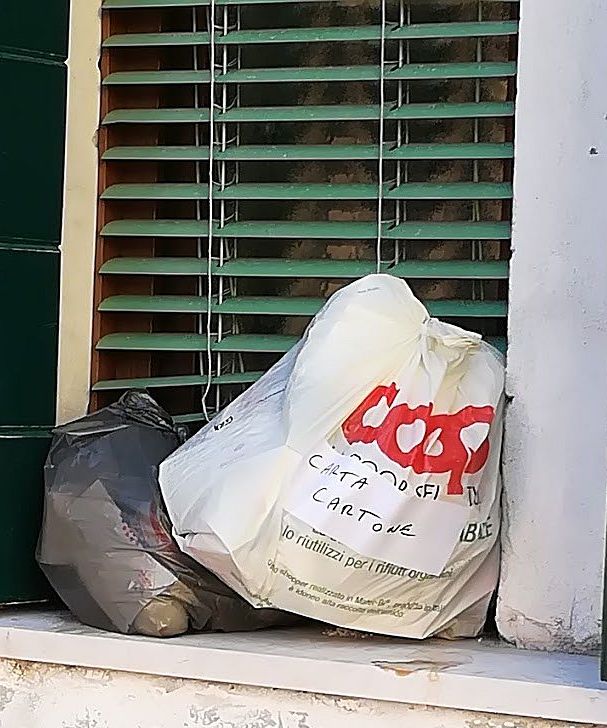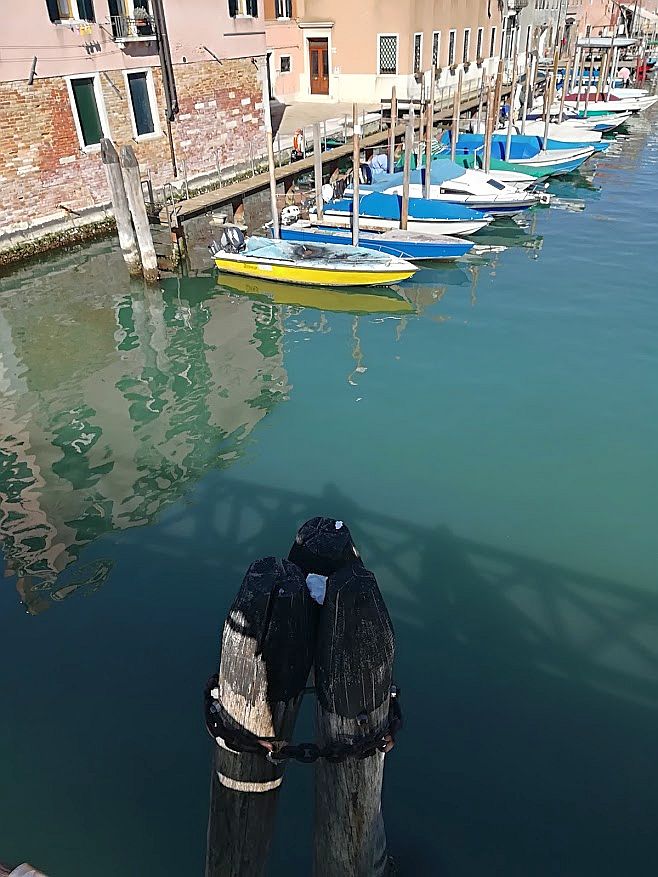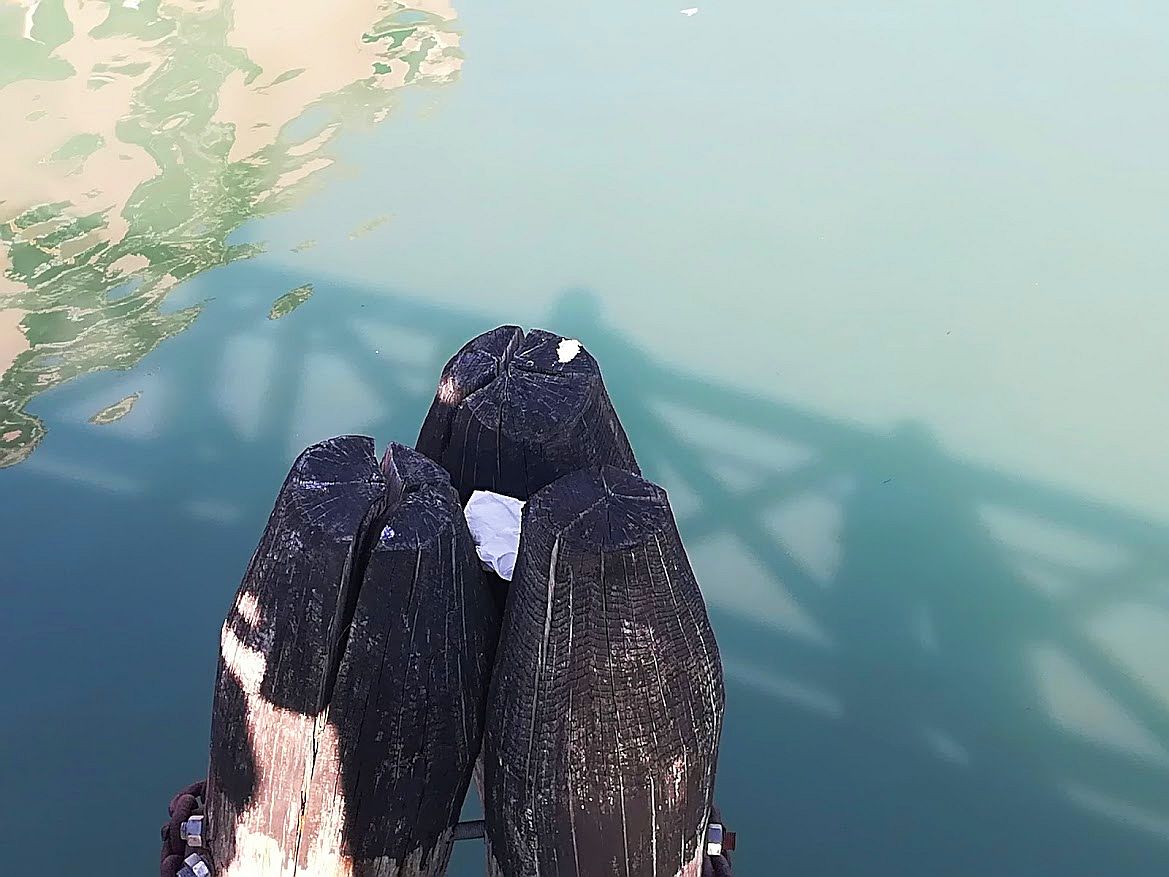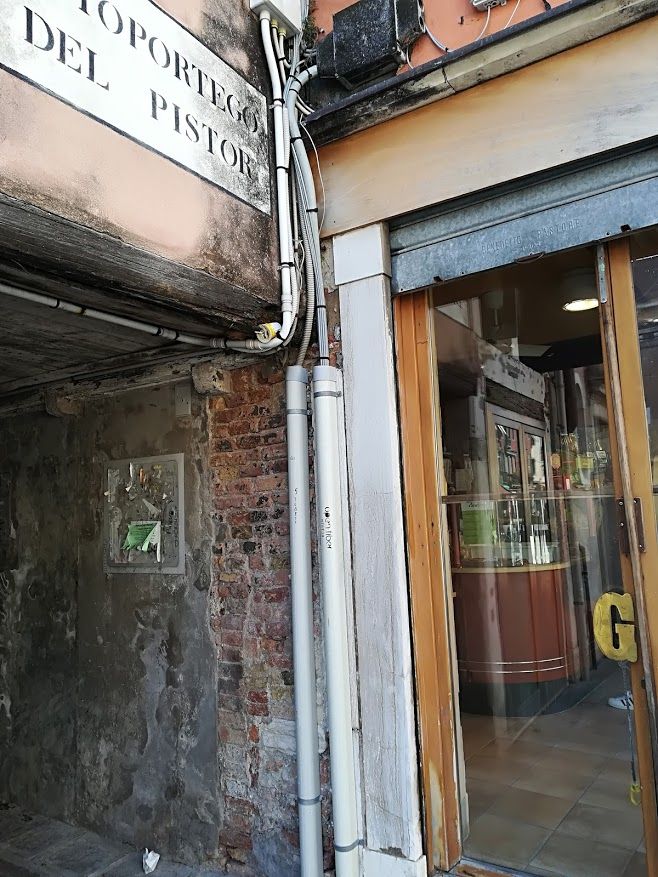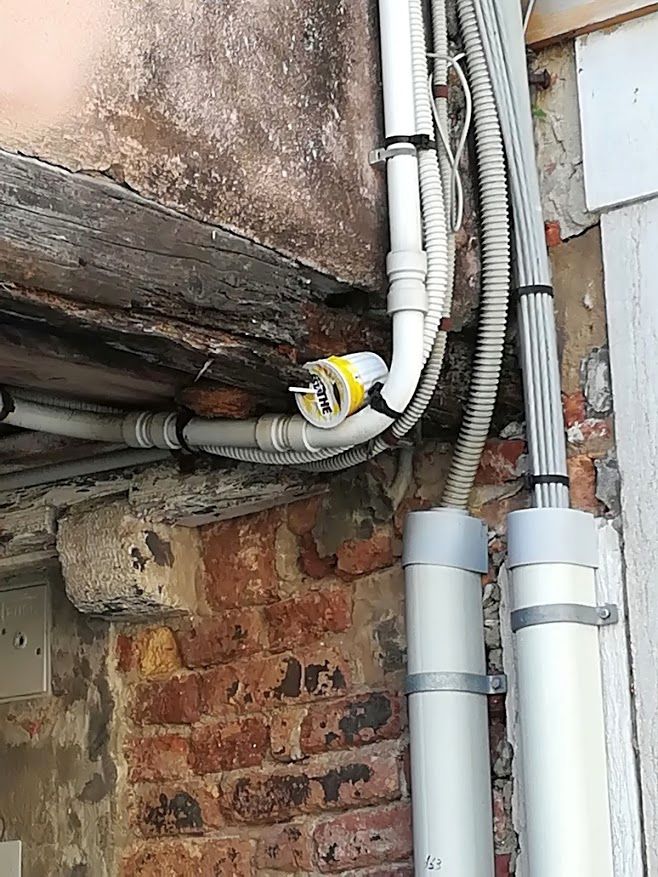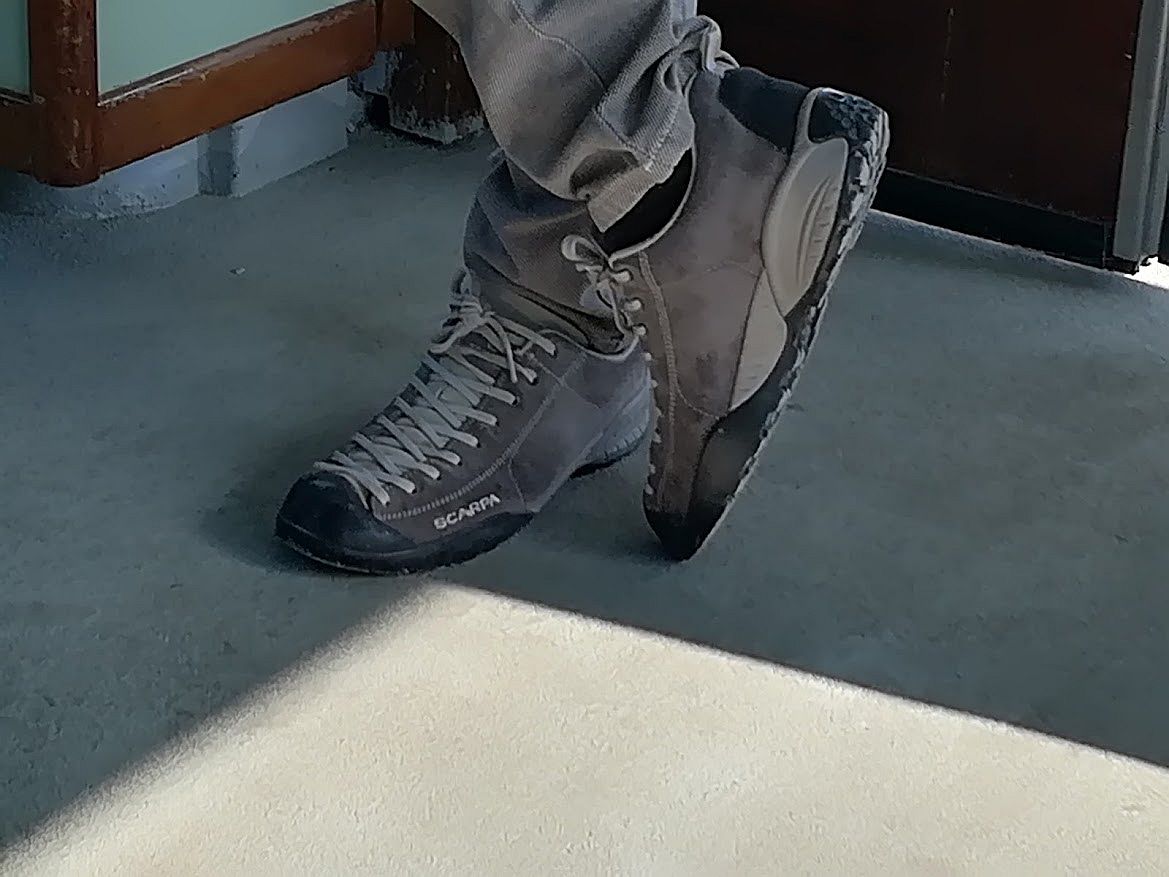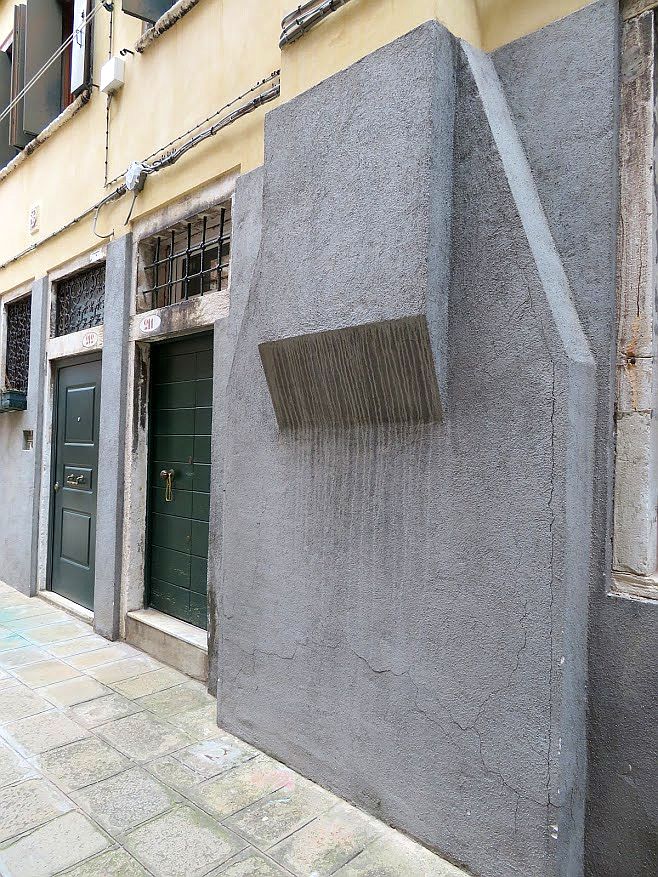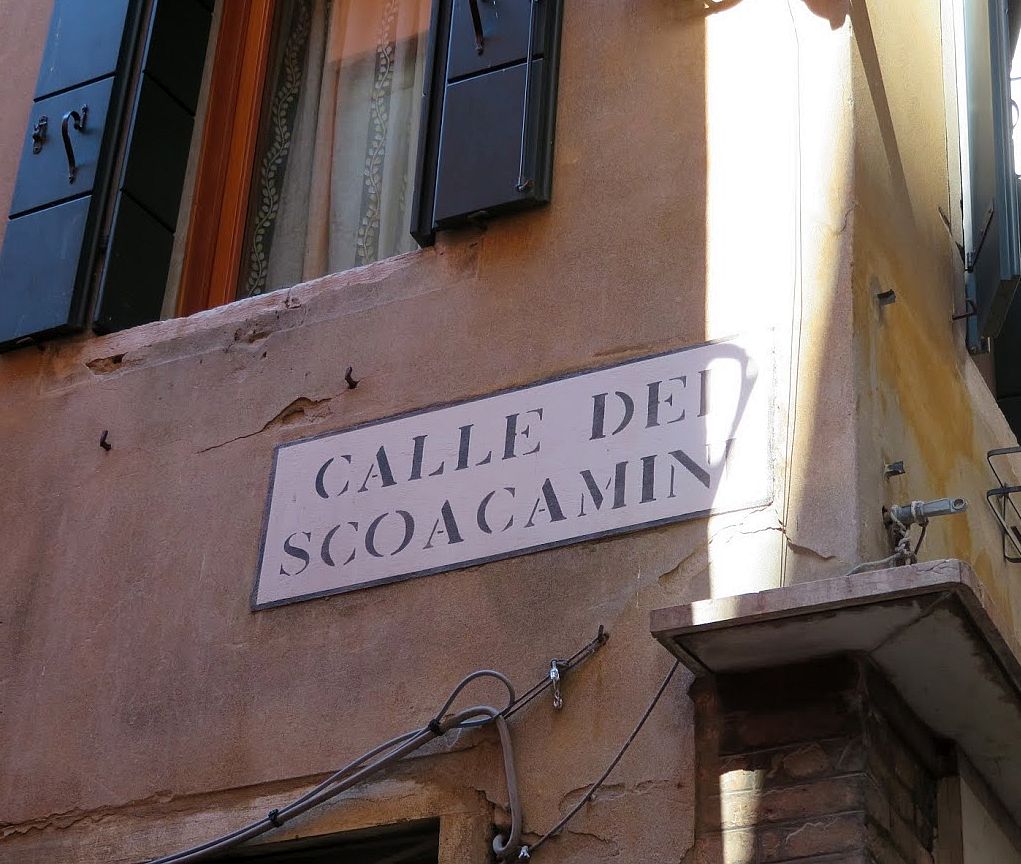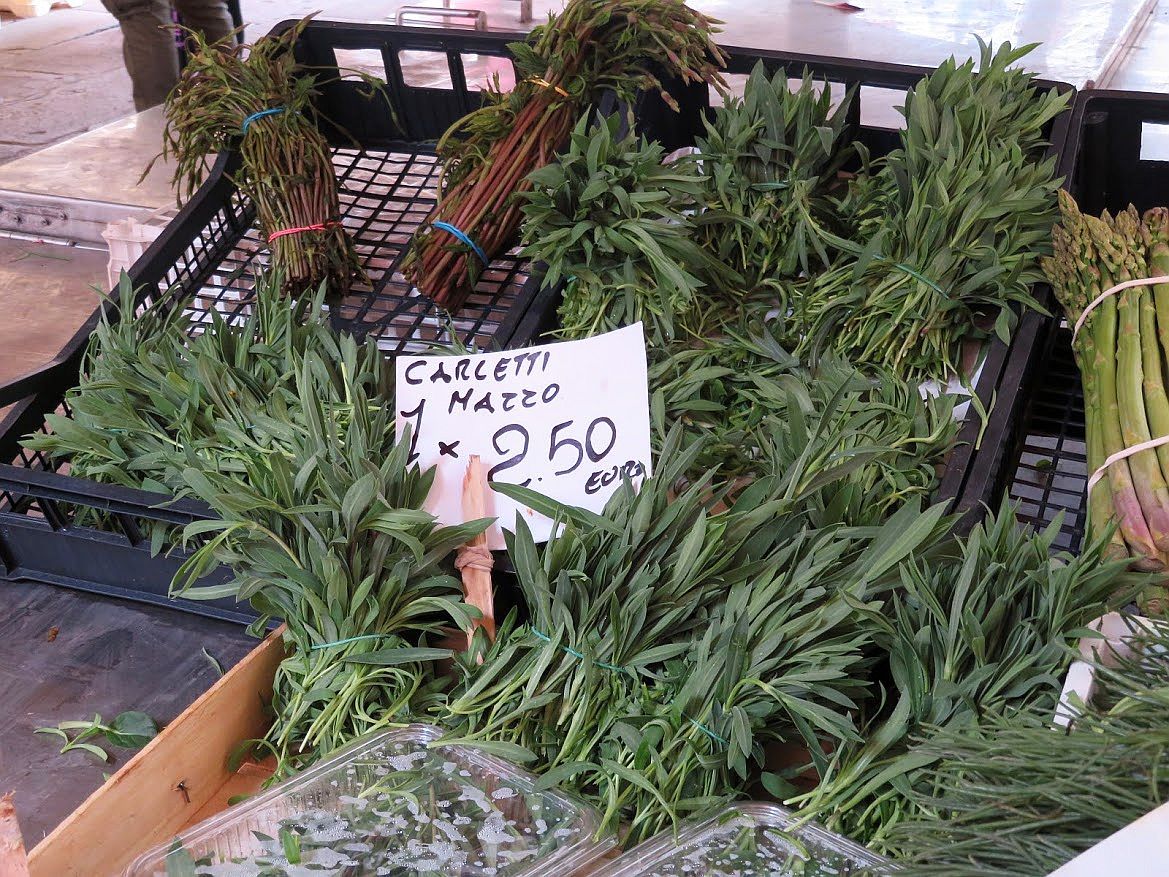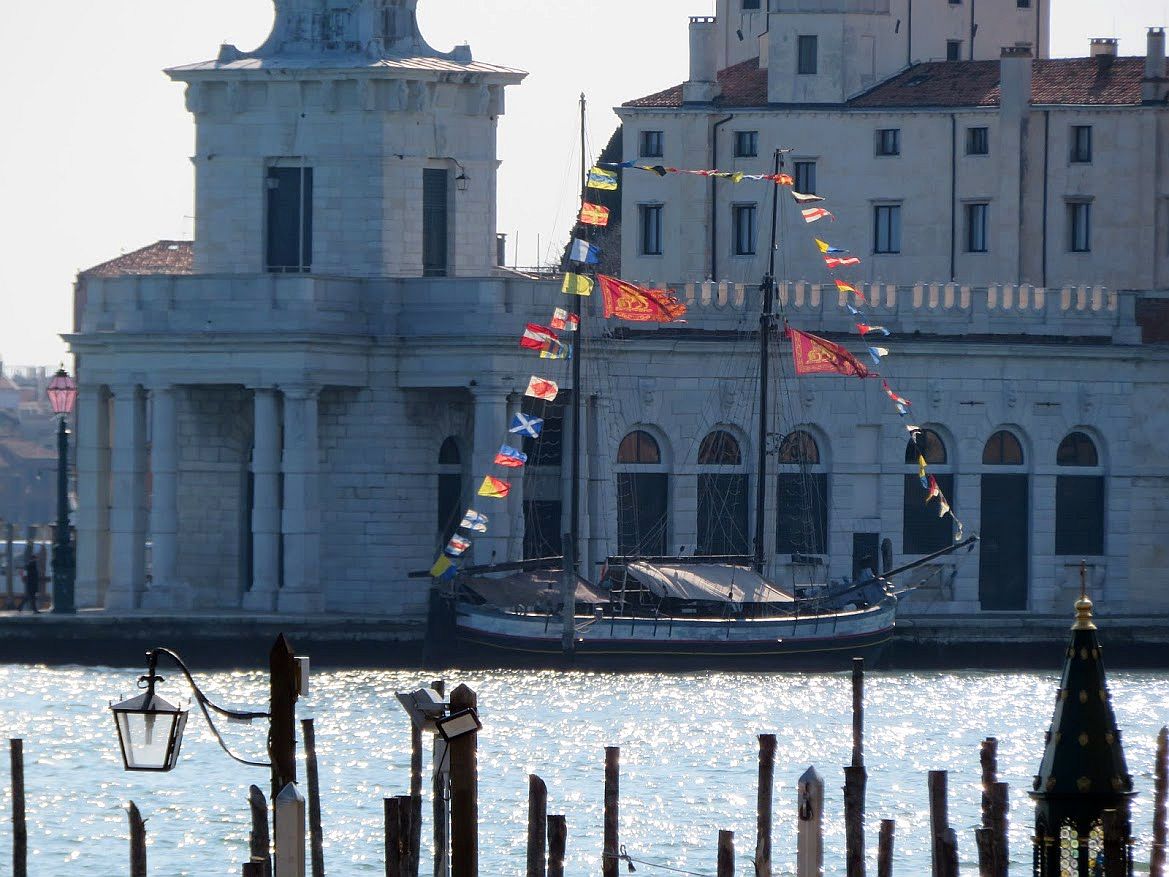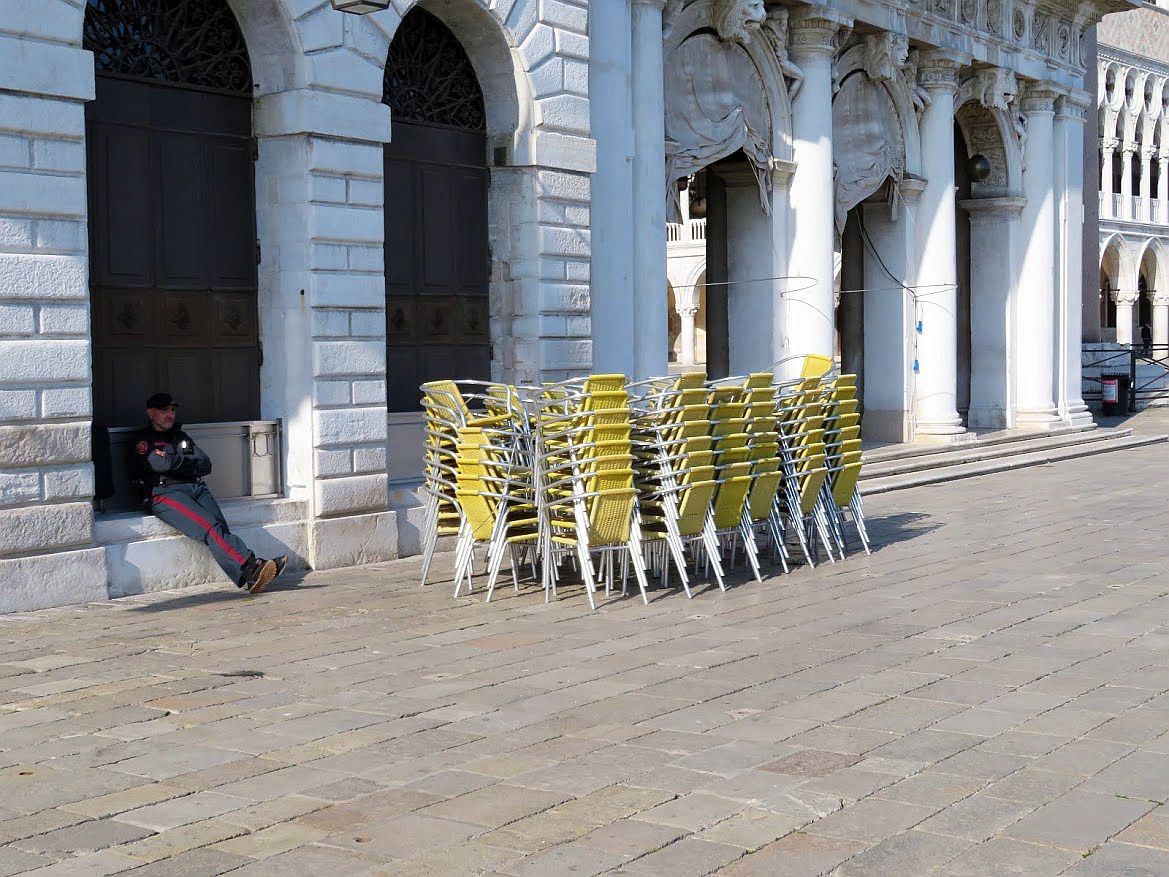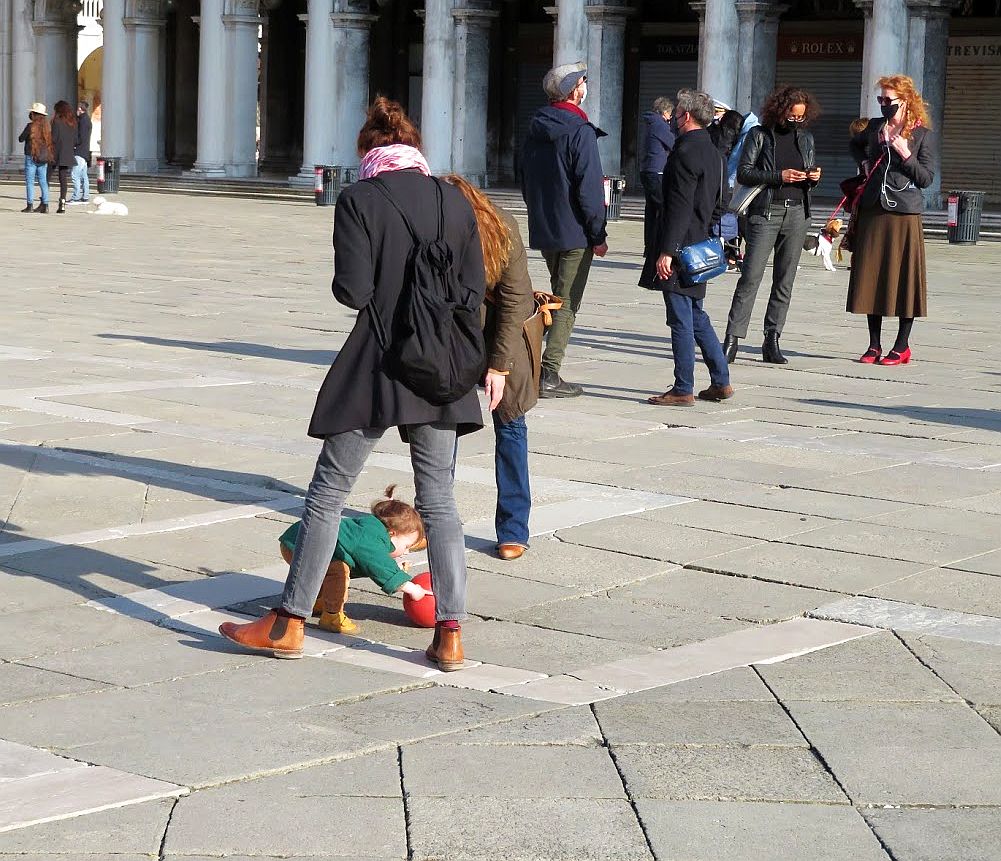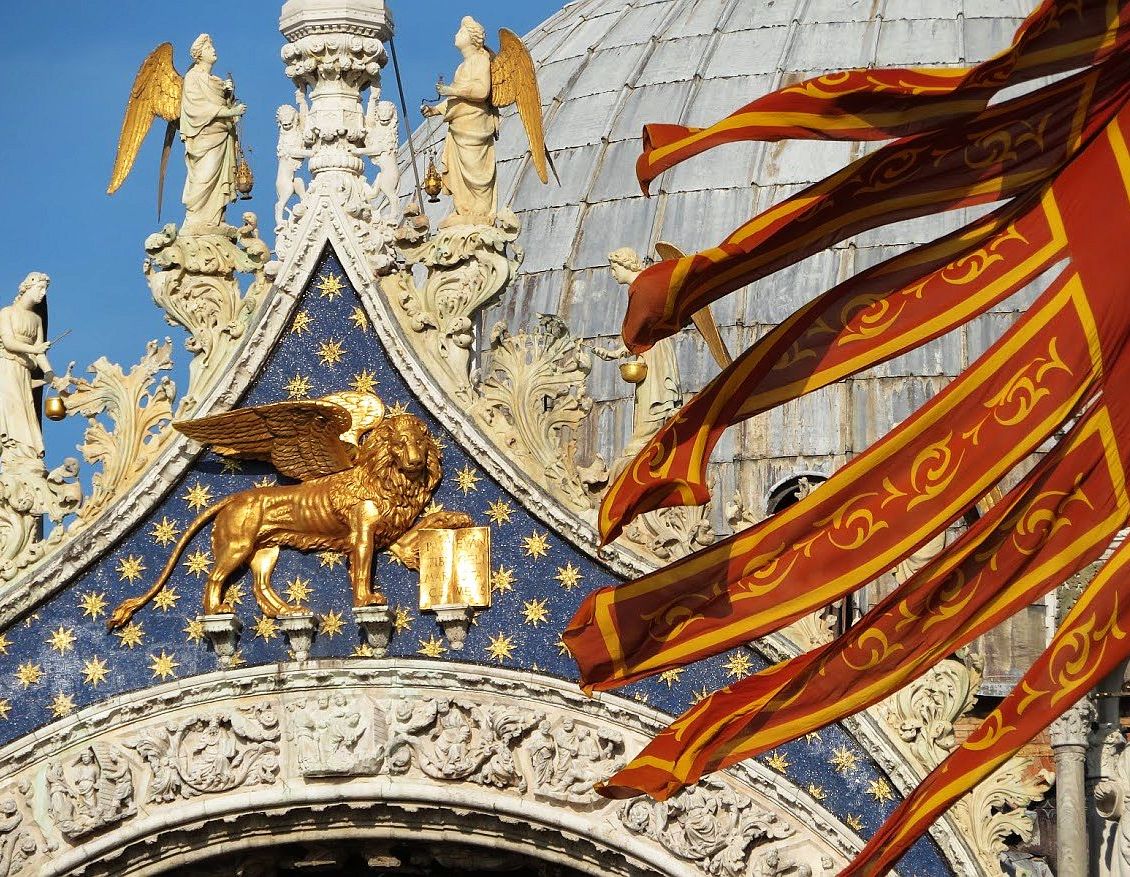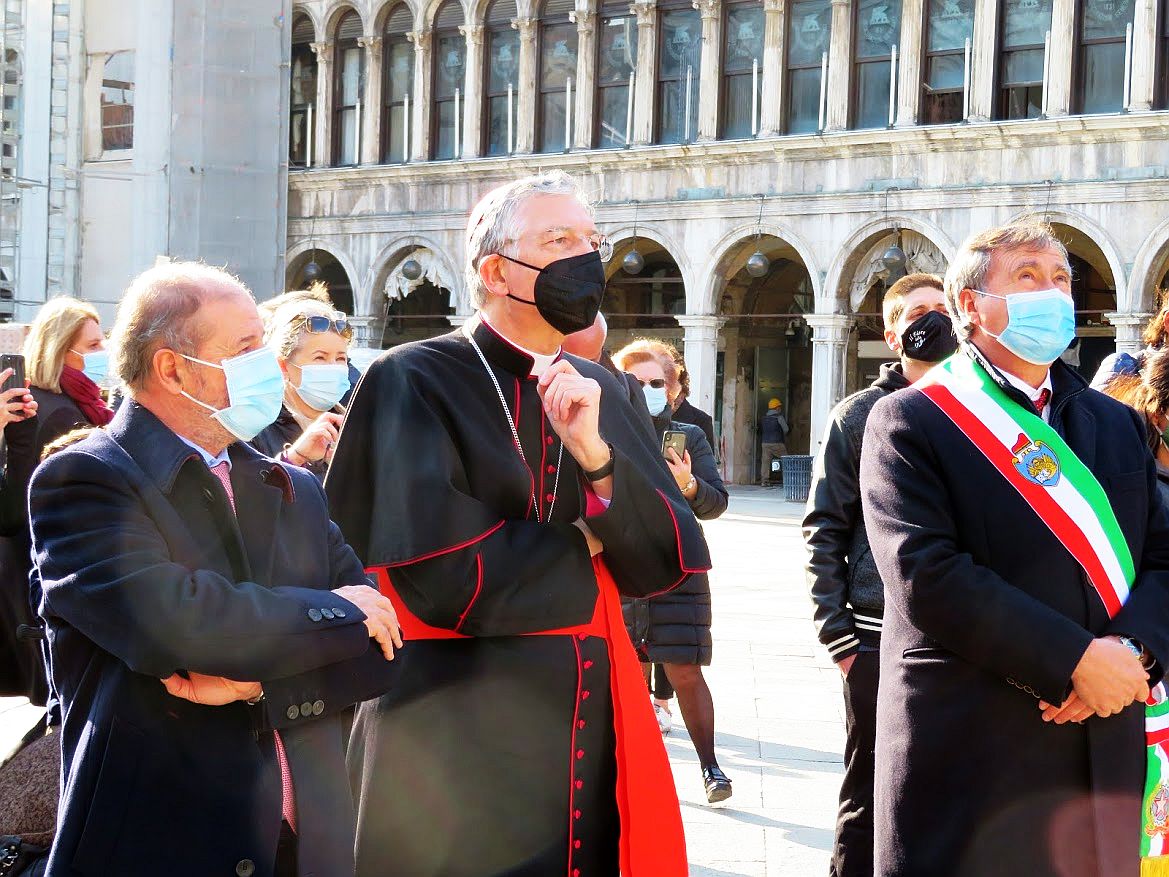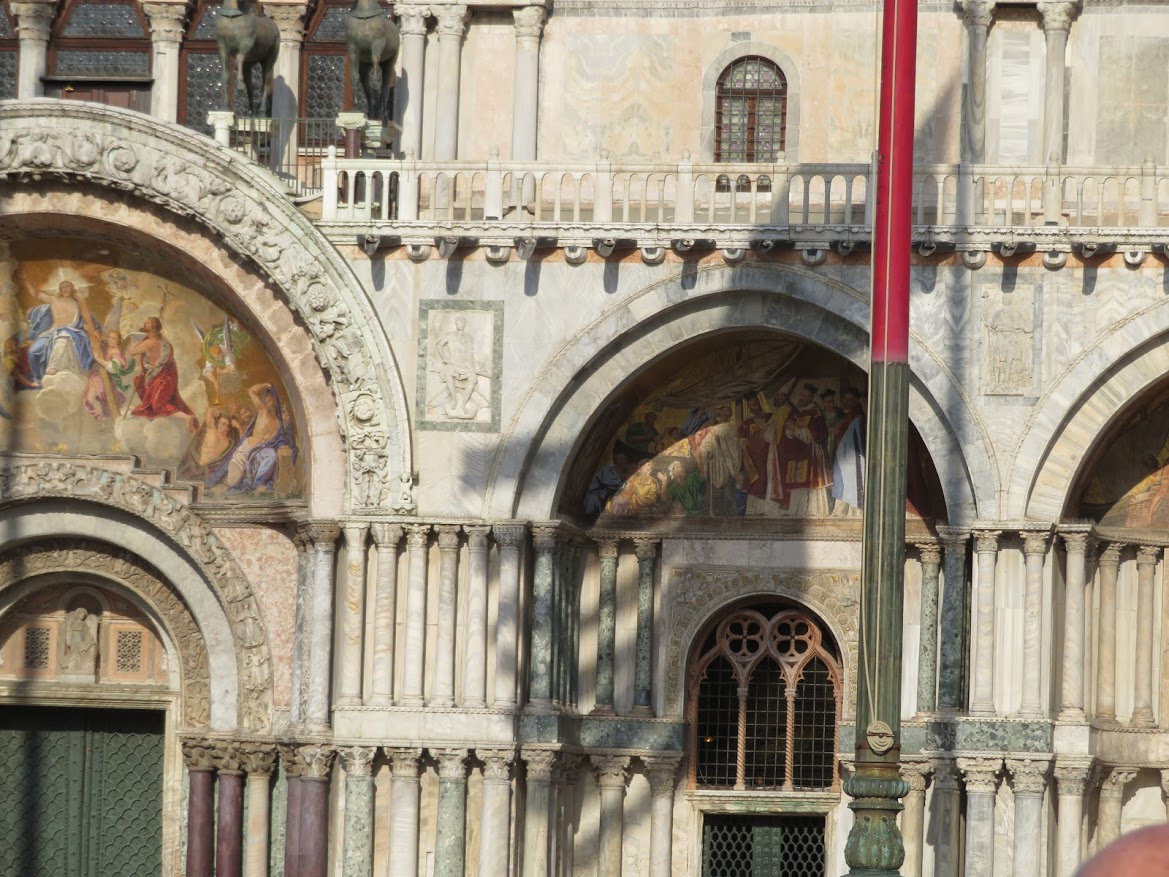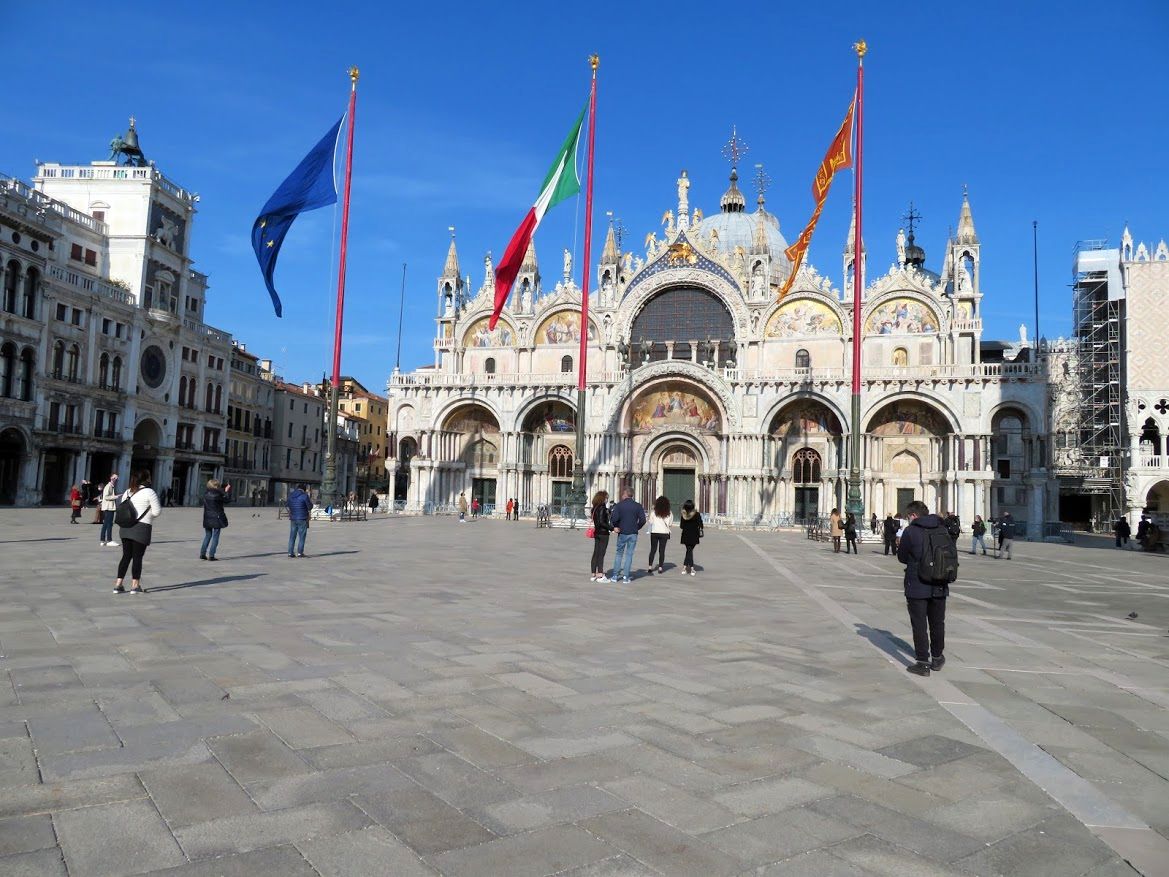
This lion is holding a book, as usual, but the message is not the traditional “Pax tibi Marce Evangelista Meus,” etc. It reads: “Legibus quibus immoderata hominum frenatur cupiditas quenpiam parere cogatis.” “Compel everyone to obey the laws by which one restrains the immoderate greed of men.”
What great ideas! Make everybody obey the laws! And put the brakes on greed! Looking at the lion’s expression, however, one intuits that he knows this is a battle that he’s not only losing, but lost. I’ve made an effort to discover what was significant about the year 1459 to inspire this painting, but haven’t found anything out of the ordinary, which is a disheartening realization: The “ordinary” is exactly the situation that the statement was referring to and it has been valid every year since the Cambrian Explosion. To review: Need for brakes, need for laws that will apply brakes, need to force people to obey the laws. Find me one person (or lion) who would disagree with that.
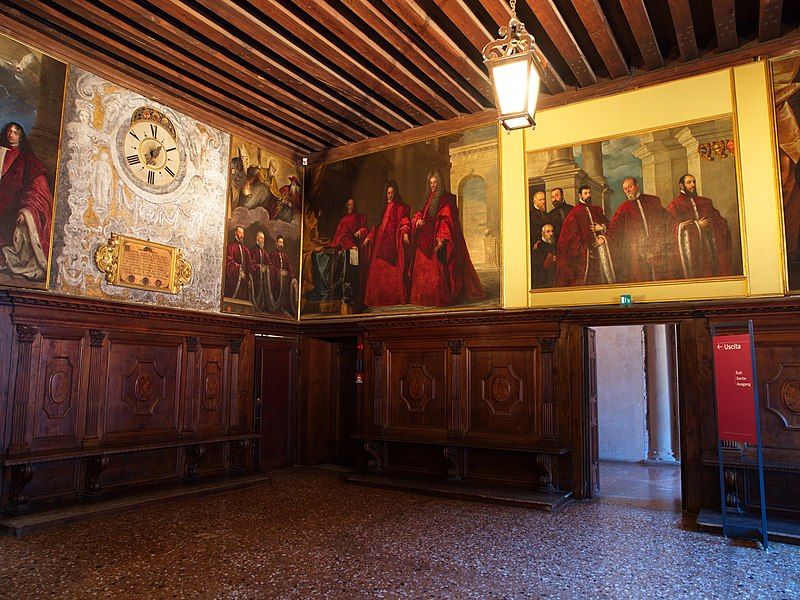
The painting was originally placed in the Sala dell’Avogaria in the Palazzo Ducale. The Avogaria de Comùn was an ancient magistrature composed of three members elected from the Great Council who were responsible for the maintenance of constitutional justice. Hence the paintings in the room were intended to reinforce the principles of good government.
So our rainbow-winged lion above is flanked by two Doctors of the Church: St. Jerome on the left of the image, and St. Augustine on the right. St. Jerome holds a white banner that says “nihili quempiam irati statuatis,” or “Do not sentence anyone for anything when you’re angry.” St. Augustine, complete with bishop’s mitre and crozier, displays this thought: “hominum uero plectentes errata illa non tam magnitudine peccati quam uestra clementia et mansuetudine metiamini,” or “In reality, in punishing the errors of men (you must) measure not so much the size of their sins as of your clemency and goodness.”
There was a marble plaque in the Sala dell’ Avogaria incised with the following reminders: “‘First of all, investigate always with diligence, sentence with justice and charity, and do not condemn anyone without having first held a fair and truthful judgment, do not judge anything on the basis of arbitrary suspicions; instead, first test and only afterward utter a sentence inspired by charity; THAT WHICH YOU WOULDN’T WANT DONE TO YOU, REFUSE TO DO TO OTHERS.’
Essentially the same simple dicta that have been expressed over the centuries and that are often inscribed in courtrooms and City Halls and anywhere else that people and the law are destined to meet.
But the lion says it best: Hit the brakes already.



